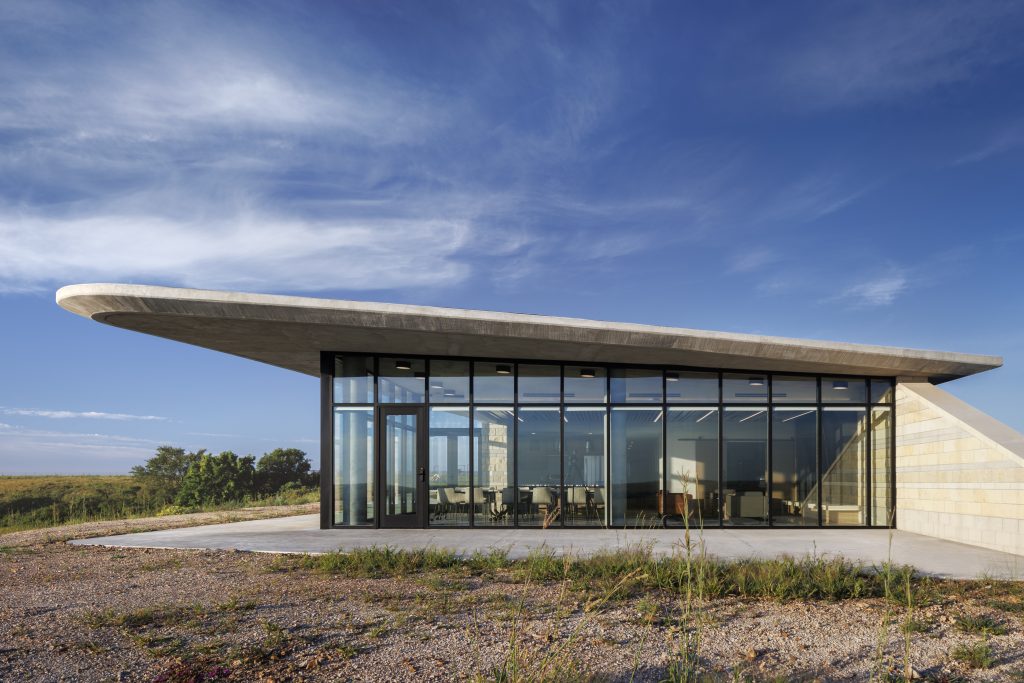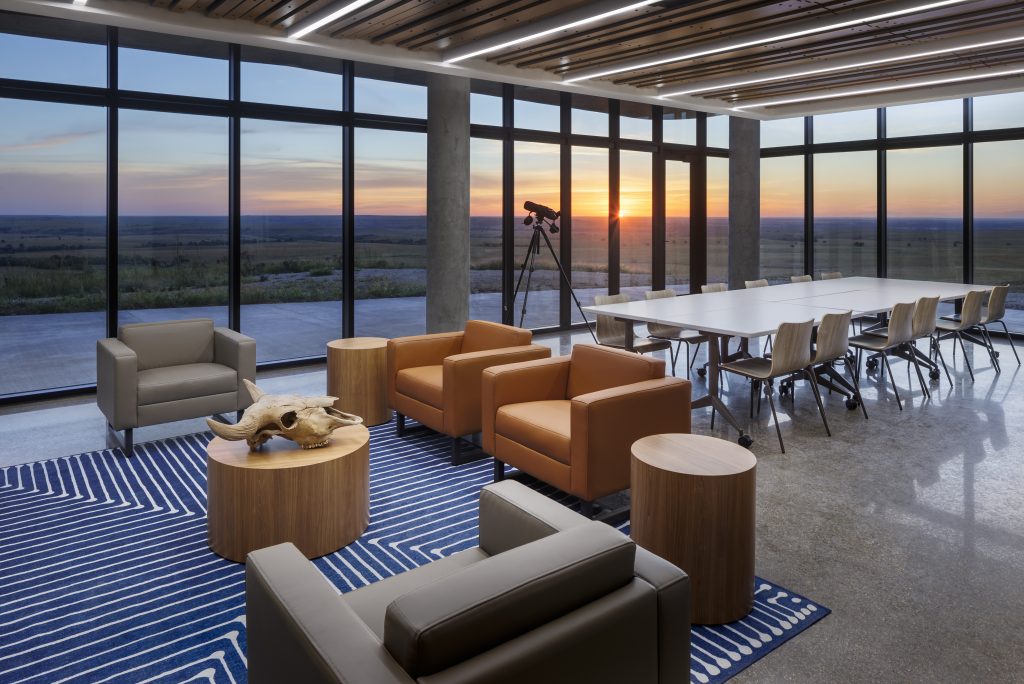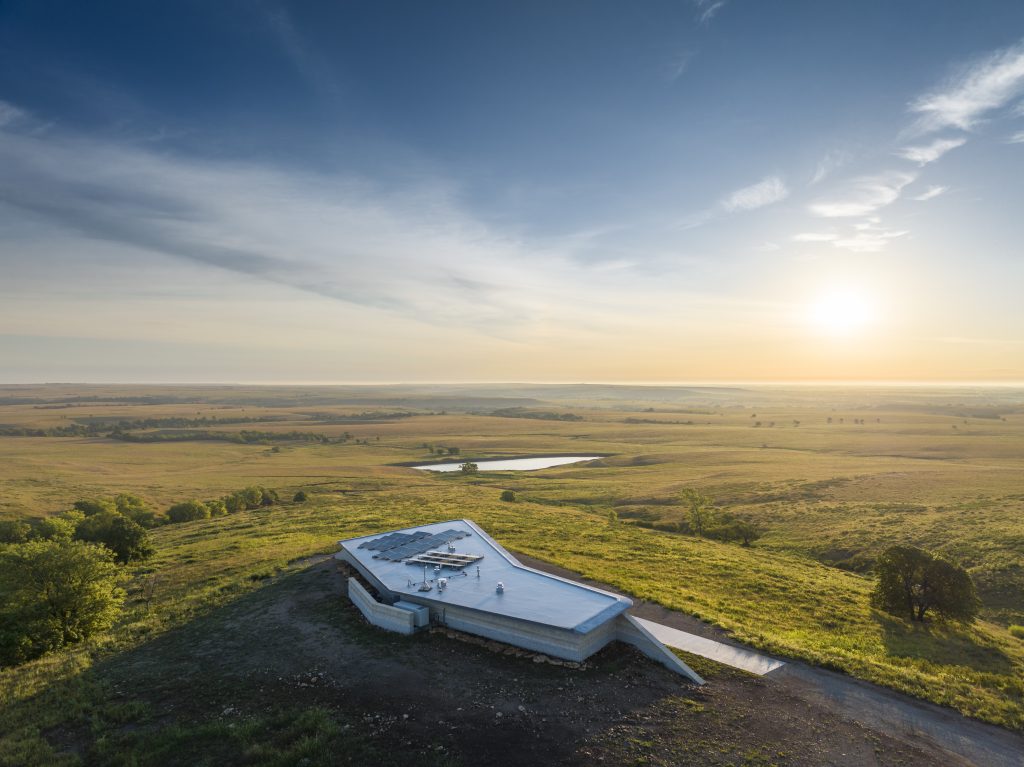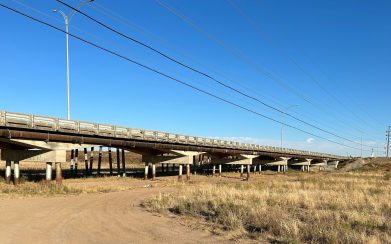Knowledge Hub
Youngmeyer Station Aids Flint Hills Research
Nestled in the rolling landscape of the Flint Hills, the Youngmeyer Field Station provides a haven for Wichita State University bioscience students and faculty. The new 3,400 SF facility promotes the continual research of the area’s wildlife and terrain. With a retreat center feel, the field station boasts a meeting space, lab, and office as well as living quarters with a kitchen and three bunk rooms. With fully functioning facilities, students and faculty can stay near their research, giving way for more intentional use of their time.
Driven by the goal to be ecologically conscience, PEC engineers dug deep to ensure their design left a positive footprint in this regional treasure.
“They really wanted to respect the surrounding environment. That impacts what we can do and where we can put things in the design,” said Kelby Ewert, electrical engineer on the project.
One of the biggest factors in the design was the desire to have the building be 100% off-grid. Solar panels are the main source of power with a generator available as a backup. Keeping the solar panels discreet was also a concern.
“Where should the solar panels go on the roof, should an array be built on the side, where do the panels get the best exposure but also not disrupt the scenery?” Ewert continued.
The best solution to respect the surrounding environment was to design the solar panels to be installed on the roof with the pitch of the roof being a clean line aesthetic.
Along with electrical, PEC also provided mechanical and structural design. Working with one of PEC’s longtime partners, Hutton Builds, required excellent communication on such an eco-forward project.
“With the utilities, we have to plan out our design and coordinate with the architect to make sure it worked for the systems and maintained the overall aesthetic,” said Ewert.
While sustainability was a major goal, an equally important one was designing a solid and secure structure while maintaining the beautiful visual landscape of the Flint Hills.
“The structure consists entirely of reinforced cast-in-place concrete. This structural material (as well as the exterior finishes, the building form, and other design decisions) was selected with one main design principle in mind: emulate the beauty of the Flint Hills landscape. Additionally, the concrete structure provided a durable, non-combustible structural material to protect against strong Kansas winds and potential wildfires,” said Ryan Taylor, structural engineer on the project.
In addition, the building is partially embedded in the surrounding land consistent with the architect’s vision to minimally impact the area. This required adjustments to what is normally used in a structural design.
“This embedment meant that half of the exterior concrete walls were designed to retain up to about five feet of soil. The retained soil and the need to support the exterior stone cladding resulted in the base of these walls being 1.5’ thick, while the typical exterior walls are only 8” thick,” Taylor explained.
The most distinctive visual aspect is the roofline of the field station. Intended to look as if blended in with the horizon, PEC engineers created structural solutions for the unique design.
“In order to achieve the necessary clear span and the cantilever at the front corner, the roof slab for the project is a 10” thick, cast-in-place reinforced concrete slab. Additionally, the roof ‘knife edge’ condition required extra coordination between the design team and the concrete subcontractor to create a solution that met the architect’s design intent of keeping a discrete, clean roof line while also being constructible,” continued Taylor.
The Youngmeyer Field Station design and build recently won the Honor Architectural Project, which is the highest design award by AIA Kansas in the 2023 Excellence in Design Awards.












